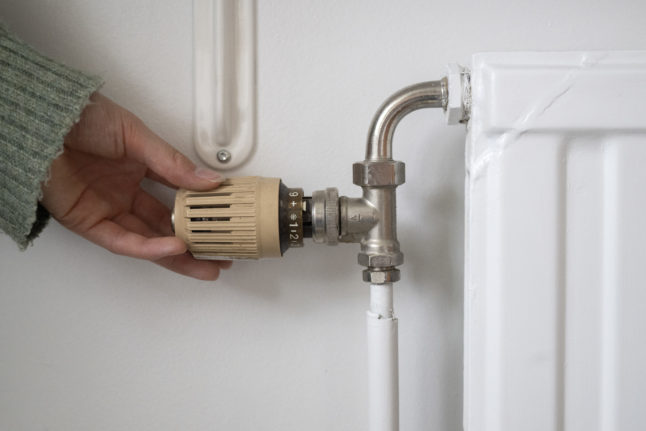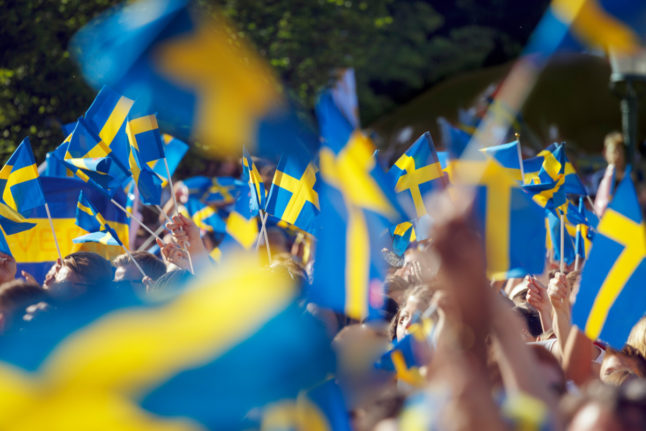The Local reached out to Anneli Beronius Haake (Swedish Made Easy), Swedish teacher and author of Teach Yourself Complete Swedish, to put together a list of words you might hear and read in the upcoming weeks as prices continue to soar.
(ett) elprisstöd – literally, electricity price support. The government will provide support to both individuals and businesses, to help cope with high electric costs. Individuals can expect a payout in February, it’s not yet clear what date businesses can expect theirs.
(ett) högkostnadsskydd – high cost protection. There have previously been discussions about high cost protections to cap electricity prices or agreements for the government to cover everything over a certain amount, but following the recent elections, it doesn’t look like this is going to happen.
(en) amortering vs (en) ränta – if you own your own house or apartment, then you already know that these words refer to payments on your mortgage (noun: amortering, verb: att amortera) and payments against the interest on your mortgage. If you’re thinking about buying, keep an eye on these two – and on interest rates (ränta)!
(en) varmhyra vs (en) kallhyra – if you’re on the market for a new rental apartment, you might see these two words pop up. Varmhyra (literally: “warm rent”) means heating is included in the rental price. Kallhyra (literally, “cold rent”) means that the rental price does not include heating costs.
(en) uppvärmning – heating, or heating costs. If your heating costs are included in your rent, you don’t have to worry about this. Instead, you only need to keep an eye on:
(en) hushållsel – or household electricity. This covers the electricity you use for everything in your home, from charging your mobile phone to using your oven.
Energisnål – energy efficient. You might see this word stuck on a dishwasher or fridge if you’re shopping for new household appliances, signalling that it will help cut down on your electric costs. Similarly, you may see the word att snåla (to scrimp or save) used in the phrases att snåla med energi (to save on energy) or att snåla med pengar (to save money).
(en) energikris – an energy crisis.
privatekonomi – personal finances. You may see this not only referring to individuals, but also to households, where it will be written as hushållens privatekonomi.
hushållskostnader – household costs, again, linked to hushållens privatekonomi, this usually refers to gemensamma kostnader (shared costs), such as water and electricity bills, insurance and internet, but can also cover other costs such as food, hygiene products such as toilet paper, and even mobile phone contracts.
(ett) energibolag, (en) elproducent – an energy company, an energy producer.
(en) elområde – an energy zone. Sweden is split into four energy zones, with the most expensive energy prices in the south of the country, covering the three largest cities: Stockholm, Gothenburg and Malmö (zones 3 and 4), and the cheapest prices in the north (zones 1 and 2).
Att spara – to save. This can be in the sense of att spara pengar (to save money), or att spara på kostnader/el (to save on costs/electricity).
Att stiga/öka/höja – these three verbs all relate to increases, but with their own nuances.
Att stiga, or stiger in the present tense means ‘rises’, and can be used to describe rising petrol prices.
Att öka, or ökar in the present tense means ‘increases’, and can be used to describe how the price of groceries are increasing.
Finally, att höja, or höjer in the present tense means ‘raises’ – when you can point out that something or someone has raised the price of something, for example, when describing how banks are raising interest rates.
Att sjunka/minska – these two verbs both relate to decreases, again with their own nuances.
Att sjunka, or sjunker in the present tense (literally sinking) means fall/slump/drop, and can be used to refer to price falls.
Att minska, or minskar, on the other hand, is like ökar, because it is used when describing how something has decreased, like your electricity usage might decrease this winter in light of rising prices.
Similarly to sjunka, you may see the verb att sänka (to lower), in the sense of lowering the heating (att sänka värmen) or lowering household costs (att sänka hushållskostnader).
(en) utgift – an expense, plural utgifter – expenses.
(en) inkomst – income. A source of income would be (en) inkomstskälla.
(en) plånbok – literally, this means wallet. Figuratively, it also means your bank account and its contents. Headlines about money leaving your plånbok don’t mean money is vanishing from your wallet, but from your bank account. During the recent Swedish election, for example, politicians spoke about plånboksfrågor (literally “wallet issues”), issues affecting people’s income and spending power.
Att dra ner på utgifterna – to cut down on your expenses. This is related to the phrase att se över utgifterna: to take a look at your expenses, for example to see if there are any areas you can cut down.
Att dra åt svångremmen – to tighten one’s belt.




 Please whitelist us to continue reading.
Please whitelist us to continue reading.
Member comments